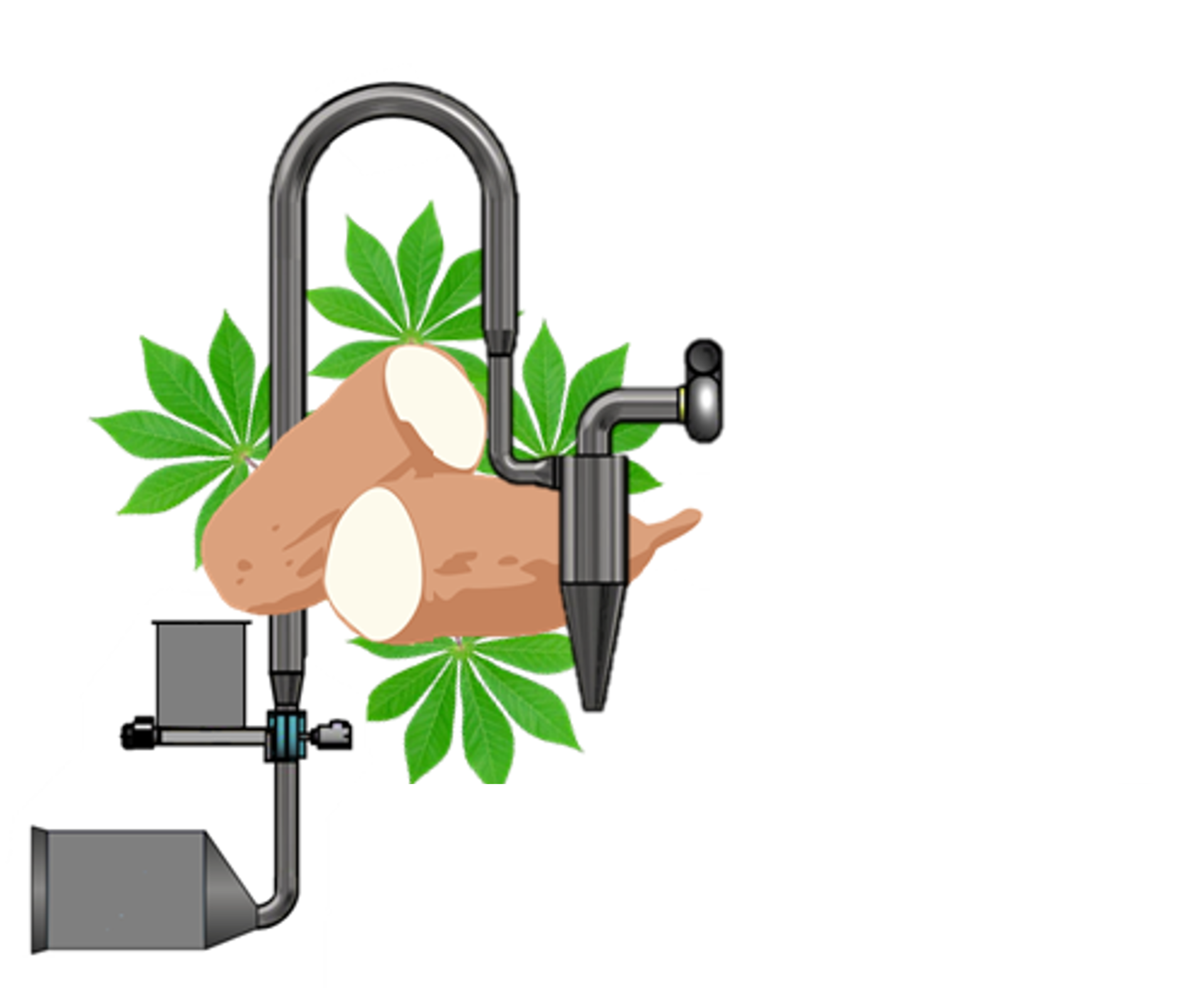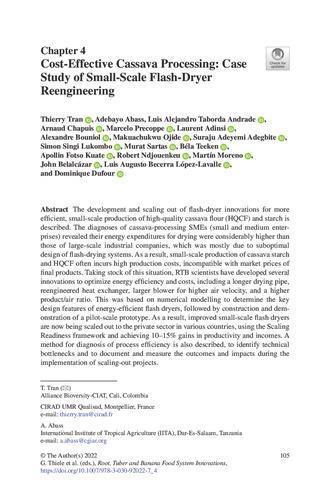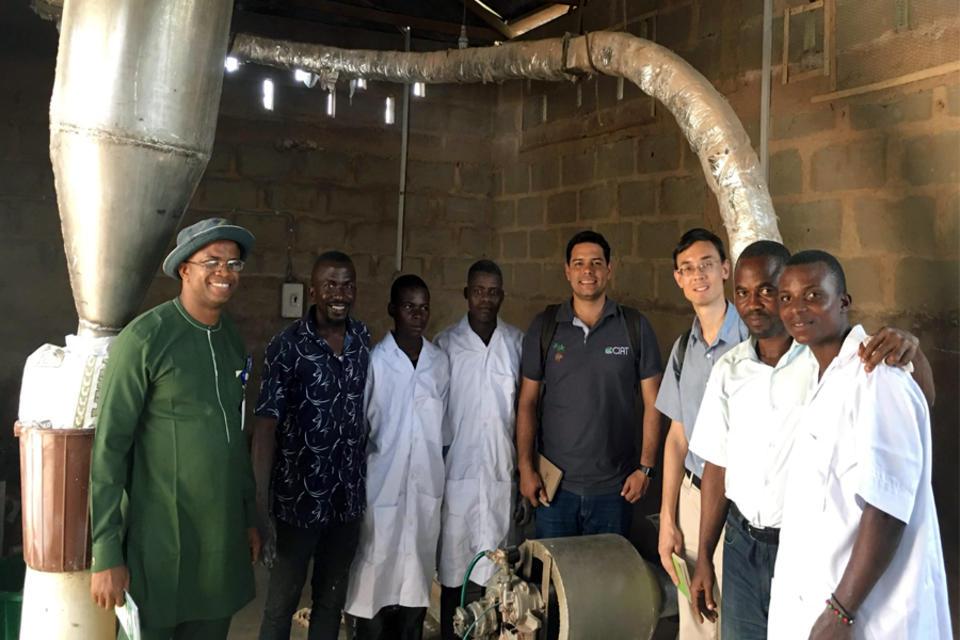Flash Dryer design tools

The function of a flash dryer system is to dry powdered products such as cassava flour and starch. This tool calculates key parameters of the flash dryer system based on the characteristics of the product to dry (feed rate, initial moisture content). Input air temperature and pipe length can also be adjusted to probe the energy-efficiency of different operating conditions.
This open access platform contains a set of five tools to design a general flash drying system, as well as each of its main components specifically:
Feeding system:
The feeding system is the part of the flash dryer that bring the wet product into the drying pipe and breaks the product into fine particles at the same time. The feeder tool calculates the dimensions of a screw conveyer according to the product flow rate user want to feed to the flash dryer.
Cyclone:
The cyclone is the component at the end of the drying pipe, that separates the dry product from the wet air. This tool calculates the dimensions of a cyclone, the component of the dryer that separates the starch/flour from the air stream at the outlet of the flash dryer. The tool includes two types of cyclone design: “Lapple” and “Stairmand”, which are the ones that have been successfully selected and tested in previous stages of the project.
Fan:
Blowers are very common devices used to generate an air flow by creating a difference of pressure. The blower system tool calculates the pressure drop of a drying system to determine the efficiency of the process and, therefore, whether the existing fan in a dryer is operating effectively.
Heat exchanger:
This is a component of the drying system that is generally used for fuels such as diesel, wood, and others. In view of the high contamination that is generated in its combustion, the hot air could not be in direct contact with the final product (cassava starch/flour). Therefore, the heat exchanger allows "clean" and hot air to enter the flash dryer without being in direct contact with the diesel/wood combustion. The heat exchanger tool calculates the main design parameters of a hot air generator to supply hot air to a flash dryer.
In what context is this tool useful?
The diagnoses of cassava-processing SMEs (small and medium enterprises) revealed their energy expenditures for drying were considerably higher than those of large-scale industrial companies, which was mostly due to suboptimal design of fash-drying systems. As a result, small-scale production of cassava starch and high-quality cassava four (HQCF) often incurs high production costs, incompatible with market prices of final products. Taking stock of this situation, CGIAR Research Program on Roots, Tubers and Bananas scientists have developed several innovations to optimize energy effciency and costs, including a longer drying pipe, reengineered heat exchanger, larger blower for higher air velocity, and a higher product/air ratio. This was based on numerical modelling to determine the key design features of energy-effcient fash dryers, followed by construction and demonstration of a pilot-scale prototype. As a result, improved small-scale fash dryers are now being scaled out to the private sector in various countries, using the Scaling Readiness framework and achieving 10–15% gains in productivity and incomes.
These tools will be very useful in all countries where small-scale processing of cassava flour or starch is a profitable option. In each country there are different low-cost fuel options as an energy source for drying. For most of these countries, these tools can be used to design flash dryers that may or may not require heat exchangers.
Results
The use of these design tools was part of a successful workshop held in 2021, with 80 participants from Nigeria, DR Congo, Cameroon, Côte d'Ivoire, Benin, Togo, Sierra Leone, Uganda, Tanzania, Malawi, Zambia, Colombia, and Vietnam.
As a result of training and sustained technical support to strengthen stakeholder capacity, increased adoption of flash dryer innovations was achieved. By 2022, increasing numbers of processors continue to adopt the RTB flash dryer innovations, including in DRC (3 dryers installed + 2 under construction), Nigeria (1 dryer installed), Ghana (1 dryer installed + 1 planned), Tanzania (1 dryer installed), Kenya (1 dryer installed) and India (1 dryer planned).
Tools often used together with this tool?
Contact people
Thierry Tran - [email protected]
Arnaud Chapuis - [email protected]




